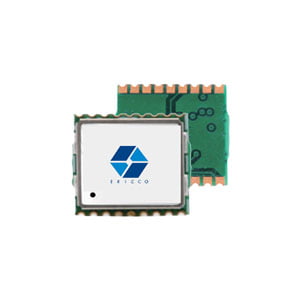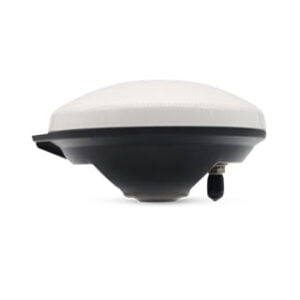Vehicle-level Multi-system Dual-frequency Navigation Positioning Module
ER-GNSS-M06 and ER-GNSS-M07 modules are GNSS dual-band navigation vehicle gauge modules for vehicle navigation applications. The ER-GNSS-M06 also has a built-in MEMS IMU, which can realize continuous positioning in tunnels;underground garages and other environments.The ER-GNSS-M06 and ER-GNSS-M07 modules are based on the multi-system, dual-frequency, high-performance SoC chip design with fully independent intellectual property rights, supporting multi-system dual-frequency joint positioning or single-system independent positioning, especially in complex scenarios such as multi-path, which can still ensure good positioning accuracy.
Features
Vehicle gauge level dual-frequency navigation positioning module
Support four systems L1+L2 or L1+L5 work at the same time
Supports BDS B1I/B1C*/B2a, GPSLIC/A/L1C*/L5, GLONASS L1, Galileo E1/E5a, NavIC(IRNSS L5)*
Support original observation output
Compliant with AEC-Q100 and IATF16949
Anti-interference design, the module can be used for stable operation in complex electromagnetic environment
Specifications
| Parameters | ER-GNSS-M06 | ER-GNSS-M07 | |
| Features | multi-system dual-frequency GNSS navigation positioning module | multi-system dual-frequency integrated navigation positioning module | |
| Specification | Automotive grade | Automotive grade | |
| Channels | 96-channel, based on UFirebird II chip | 96-channel, based on UFirebird II chip | |
| Signal | BDS B1I/B1C*/B2a | BDS B1I/B1C*/B2a | |
| GPS L1 C/A/L1C*/L5 | GPS L1 C/A/L1C*/L5 | ||
| GLONASS L1 | GLONASS L1 | ||
| Galileo E1/E5a | Galileo E1/E5a | ||
| NAVIC L5* | NAVIC L5* | ||
| QZSS L1/L5 | QZSS L1/L5 | ||
| SBAS | SBAS | ||
| Positioning mode | Single-system independent positioning | Single-system independent positioning | |
| Multi-system joint positioning | Multi-system joint positioning | ||
| Support raw observation output | Support raw observation output | ||
| Time to first fix (TTFF) | Cold start<30s | Cold start<30s | |
| Warm start<2s | Warm start<2s | ||
| Recapture<1S | Recapture<1s | ||
| Positioning accuracy | 1.5m CEP(Dual frequency four system) | 1.5m CEP(Dual frequency four system) | |
| 1.0m CEP(DGNSS) | 1.0m CEP(DGNSS) | ||
| Speed accuracy | 0.1m/s | 0.1m/s | |
| Sensitivity(RMS) | Tracking -165dBm | Tracking -165dBm | |
| Capture -148dBm | Capture -148dBm | ||
| Warm start -158dBm | Warm start -158dBm | ||
| Recapture -160dBm | Recapture-160dBm | ||
| Data update rate | 1Hz/10Hz* | 1Hz/10Hz* (GNSS& Integrated navigation data update rate) 100Hz (IMU data update rate) | |
| Data format | NMEA 0183, Unicore Protocol | NMEA 0183, Unicore Protocol | |
| 1PPS accuracy(RMS) | 20ns | 20ns | |
| Physical characteristics | |||
| Size | 12.2×16.0×2.4mm | ||
| Encapsulation | 24-pin, SMD surface mount | ||
| Operating temperature | -40℃~+85℃ | ||
| Storage temperature | -45℃~+85℃ | ||
| Electrical Specifications | |||
| Working voltage | 2.7V-3.6V DC | ||
| Power consumption | 300mW/330mW | ||
Application Techniques
1.Some Questions about GNSS Antenna
2.The Difference and Connection between GPS and GNSS
3.High-precision GNSS receiver design
4.Scientific Farming, With The Help of GNSS
5.The Working Principle of GNSS
More Products








